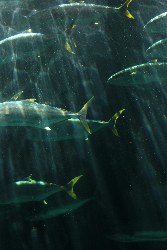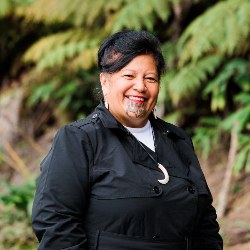Wairarapa’s Mangatarere Stream wins at NZ River Awards
Wairarapa’s Mangatarere Stream wins at NZ River Awards
The Mangatarere Stream, a tributary of the Waiohine River, was one of three rivers awarded in the Most Improved River category of this year’s NZ River Awards, held last night in Wellington.
Following a decade of restoration and improved effluent management, the waters of the stream have progressively improved, resulting in lower levels of E.coli and a higher macrovinvertebrate community index (an indicator of water quality), which stands at 110 – the highest of this year’s Most Improved Award finalists.
“Water quality in the Mangatarere is slowly but surely improving, and this is a great result for the river, and a real success for the many people and groups involved.
“We want to thank the Mangatarere Restoration Society, our enlightened Wairarapa farmers and Carterton District Council for making a huge contribution to what is a very positive result,” says Greater Wellington deputy chair Cr Adrienne Staples.
The key to the clean-up has been a combination of activity, including stock exclusion and riparian planting by farmers an volunteers, lower discharges from Carterton’s waste-water plant particularly during summer and lower stocking numbers and effluent discharge at Reid’s Piggery.
“This is a great example of co-operation, Wairarapa style,” says Cr Staples.
“Farmers are increasingly looking to environmentally sound practices with many working with Greater Wellington on farm environment plans that protect water quality. Local volunteers in the Mangatarere Restoration society, and farmers, have put their backs into riparian planting along the stream. Effluent discharges from the local water treatment plant and piggery has been significantly reduced.
“Combined, they’ve put the river on a course for long term improvement and shown what can be achieved when we work together.”
According to the Award’s citation, all dairy farms in the catchment have been riparian fenced – this work began more than 20 years ago. It is estimated that in 2010 around 30% of the main catchment was fenced and today that figure is around 75%. The most immediate benefit is the exclusion of stock. Improved management of dairy farm effluent has also helped lower nutrient levels in the catchment.
“Improving our rivers is a long term communal enterprise. The water quality of the Mangatarere Stream, remains unsatisfactory. The level of e-coli, phosphorous and nitrogen are below average or in the worst 25% of comparable monitoring sites. We still have work to do to restore the health of this stream, and of others throughout the region,” says Cr Staples.


 Gordon Campbell: On bird flu, AUKUS entry fees and Cindy Lee
Gordon Campbell: On bird flu, AUKUS entry fees and Cindy Lee NZ Government: New Lab To Help Protect Key Pacific Tuna Fisheries
NZ Government: New Lab To Help Protect Key Pacific Tuna Fisheries Susan Botting - Local Democracy Reporter: Ruawai Leader Slams Kaipara Council In Battle Over $400k Property
Susan Botting - Local Democracy Reporter: Ruawai Leader Slams Kaipara Council In Battle Over $400k Property Te Pati Maori: Another ‘Stolen Generation’ Enabled By Court Ruling On Waitangi Tribunal Summons
Te Pati Maori: Another ‘Stolen Generation’ Enabled By Court Ruling On Waitangi Tribunal Summons Peace Action Wellington: Die In for Palestine Marks ANZAC day
Peace Action Wellington: Die In for Palestine Marks ANZAC day Labour Party: Penny Drops – But What About Seymour And Peters?
Labour Party: Penny Drops – But What About Seymour And Peters? Government: PM Announces Changes To Portfolios
Government: PM Announces Changes To Portfolios


